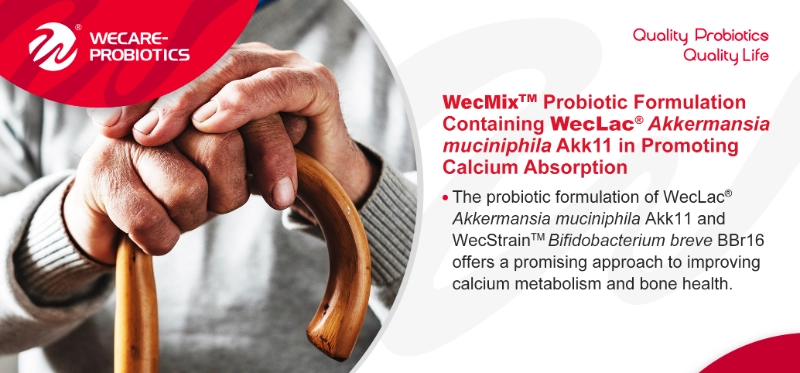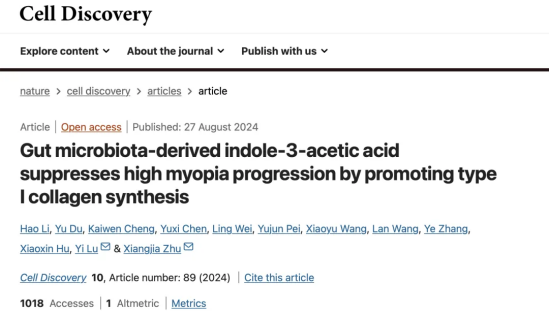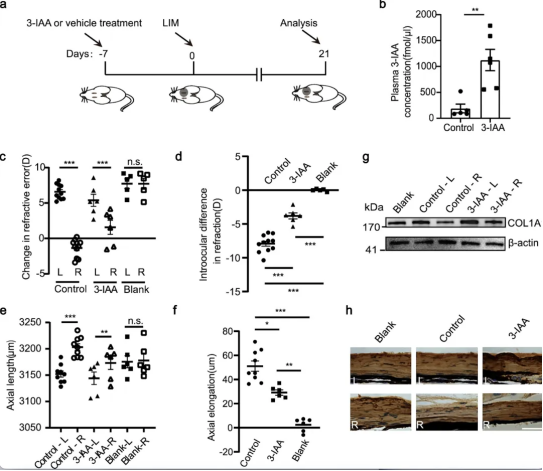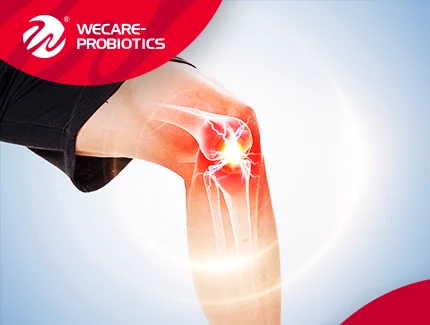Industry Insights
Home > News > Industry Insight > WecMix™ Probiotic Formulation Containing WecLac® Akkermansia muciniphila Akk11 in Promoting Calcium Absorption
WecMix™ Probiotic Formulation Containing WecLac® Akkermansia muciniphila Akk11 in Promoting Calcium Absorption

Introduction
High myopia (HM) is a serious form of nearsightedness that can lead to significant vision impairment and even blindness. Characterized by an elongated eyeball, thinning of the sclera, and various complications, including glaucoma, cataracts, macular degeneration, and retinal detachment, HM presents a growing public health concern, particularly in the age of digital screens and prolonged blue light exposure.
Understanding High Myopia
The alarming rise in high myopia cases correlates with lifestyle changes, including increased screen time. Symptoms of HM can manifest as rapid vision decline, eye protrusion, and dark shadows in the field of vision. Complications from HM can be irreversible, highlighting the urgent need for effective interventions.

The Role of Akkermansia
Recent research by the team at Fudan University Eye, Ear, Nose, and Throat Hospital reveals a fascinating connection between gut microbiota and ocular health. In particular, the Akkermansia (AKK) species of bacteria has shown promise in influencing myopia progression. The study found that individuals with high myopia exhibited significantly lower levels of Akkermansia in their gut compared to healthy controls.

The Metabolite: Indole-3-Acetic Acid (3-IAA)
One of the key findings from this research is the identification of indole-3-acetic acid (3-IAA), a metabolite produced by Akkermansia, as a potential therapeutic agent. The study indicated that plasma levels of 3-IAA were markedly reduced in high myopia patients, suggesting a strong link between 3-IAA levels and the severity of myopia. Moreover, higher levels of 3-IAA correlated negatively with axial length, reinforcing its potential role in mitigating HM.
Mechanism of Action
3-IAA promotes the expression of collagen type I (COL1A1) in the sclera, which is crucial for maintaining the structural integrity of the eye. The degradation of this collagen is a significant factor in the progression of myopia. Therefore, enhancing 3-IAA levels through dietary or microbial interventions may offer a new avenue for treatment.
Promising Research Findings
In a study involving 170 participants from Shanghai universities, researchers utilized 16S rRNA gene sequencing to analyze gut microbiota compositions. They found that several beneficial bacteria, including Akkermansia, were significantly reduced in individuals with high myopia. Additionally, mouse models demonstrated that daily supplementation of 3-IAA led to a remarkable reduction in refractive errors and axial elongation.
These findings not only highlight the intricate relationship between gut health and eye health but also point towards innovative strategies for preventing and treating high myopia.

Wecare Probiotics: Pioneering Probiotic Solutions
At Wecare Probiotics, we recognize the importance of gut health in overall well-being. Our range of high-potency probiotic powders and microecology products can support the growth of beneficial gut bacteria like Akkermansia. Our commitment to advancing probiotic research means that we continually monitor the latest studies, ensuring that our products are backed by innovative science.
Conclusion
The emerging evidence linking Akkermansia and their metabolite 3-IAA to the prevention and management of high myopia presents an exciting frontier in ocular health. By focusing on gut microbiota through targeted probiotic supplementation, such as those offered by Wecare Probiotics, individuals may find new hope in managing their vision and preventing the progression of myopia.
As research continues to unfold, it is crucial for those affected by high myopia to explore these innovative strategies in conjunction with their healthcare providers.
Main references
Microbiome (IF 13.8) Pub Date: 2024-03-19, DOI: 10.1186/s40168-024-01750-y https://www.nature.com/articles/s41421-024-00709-5









 Leave a Message
Leave a Message Email
Email Linkedin
Linkedin